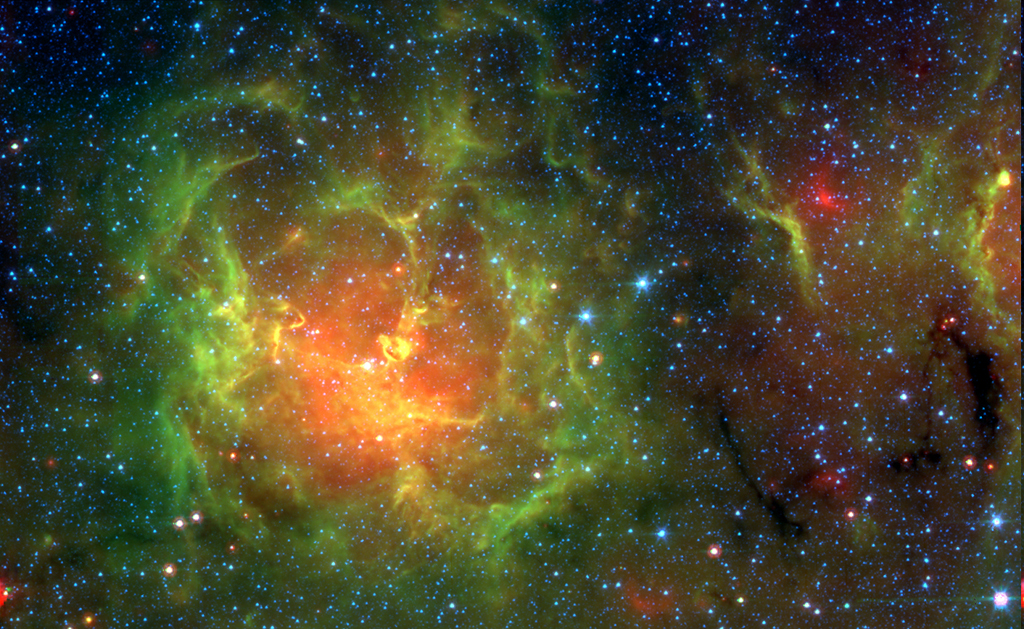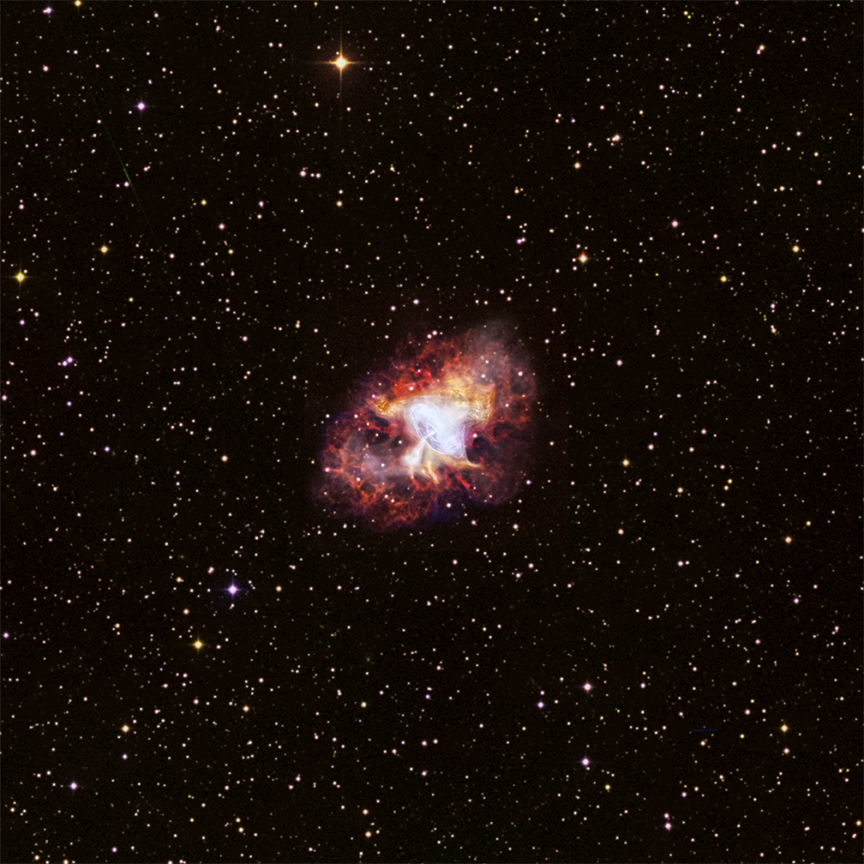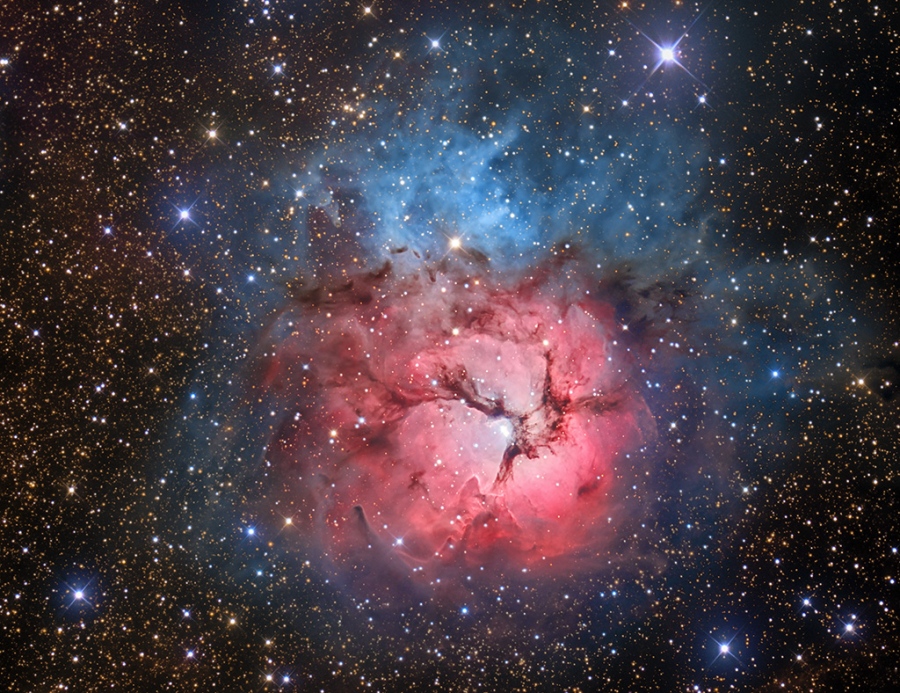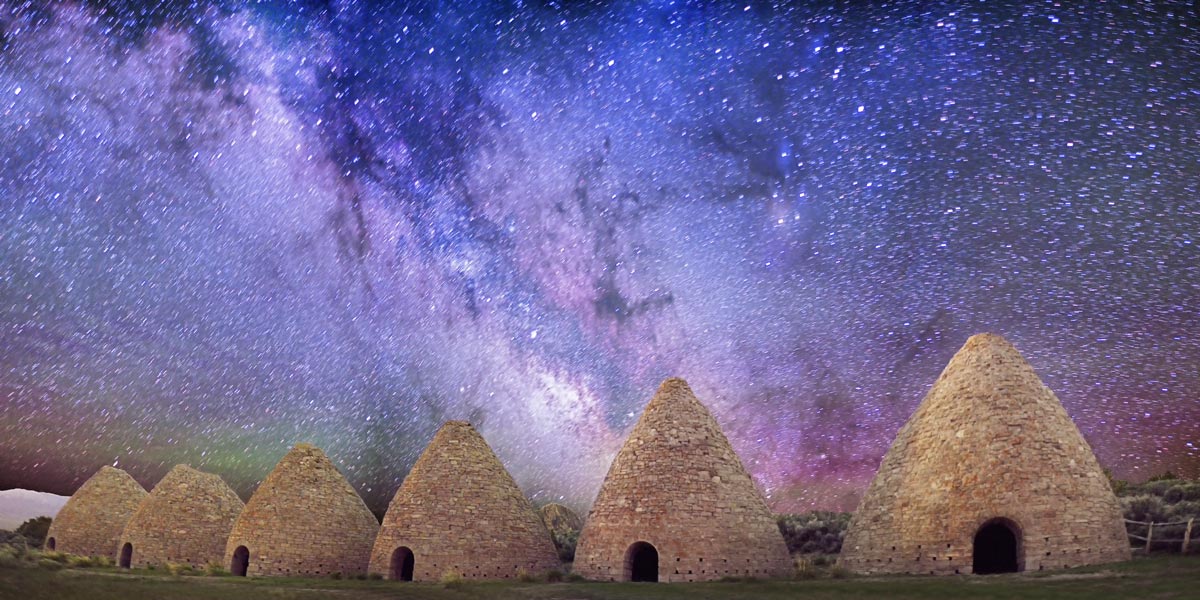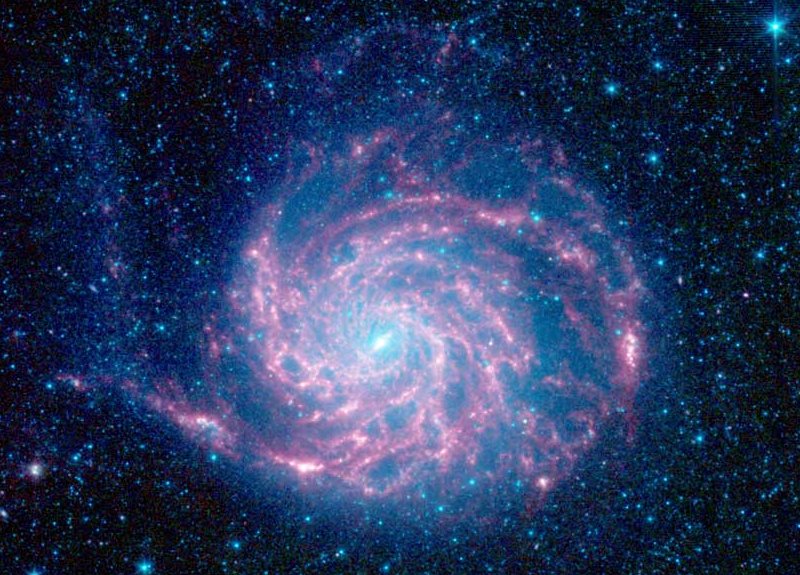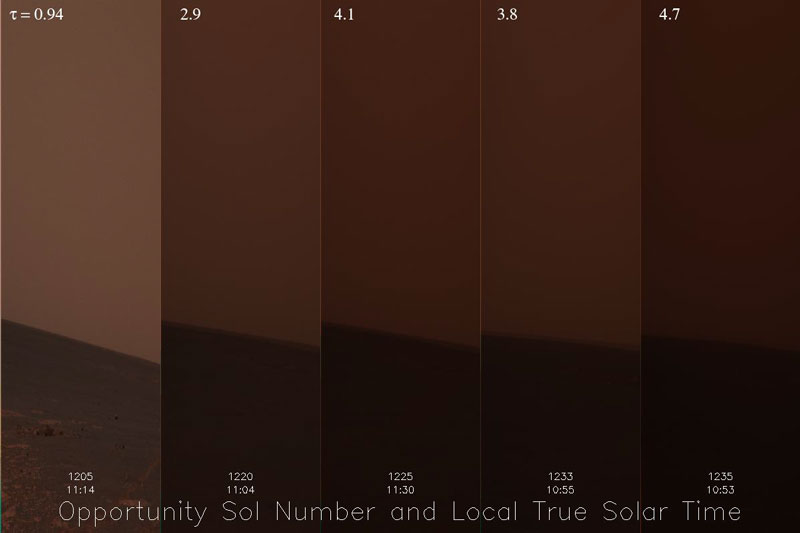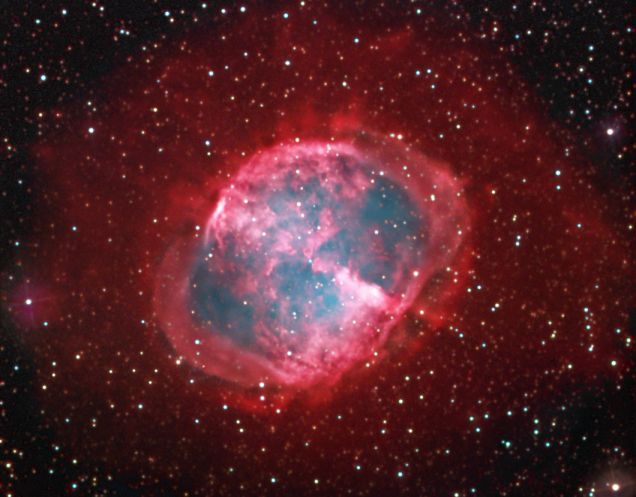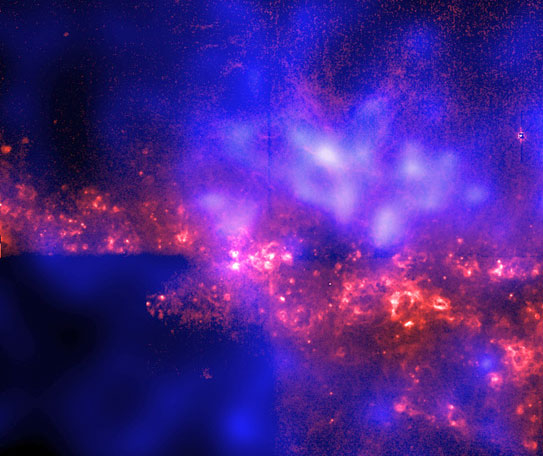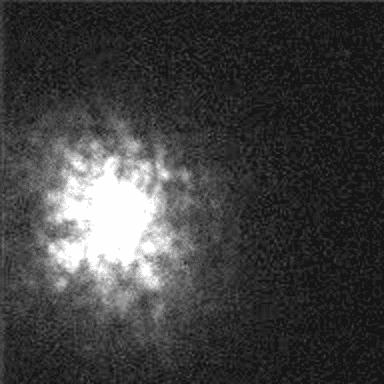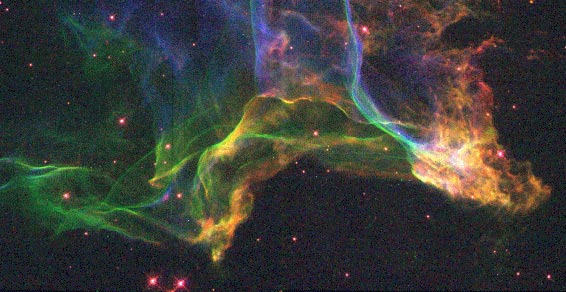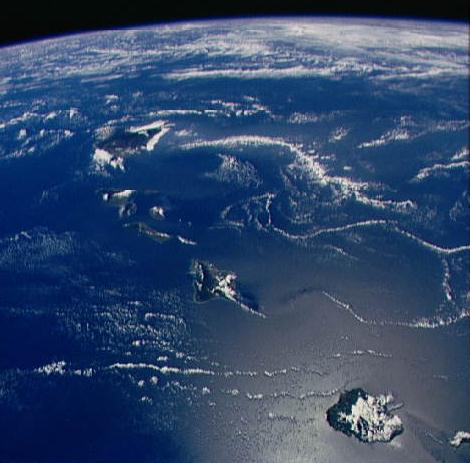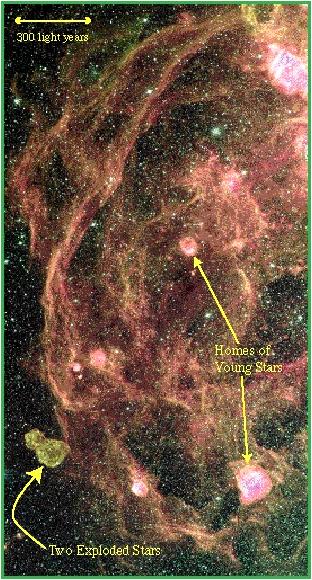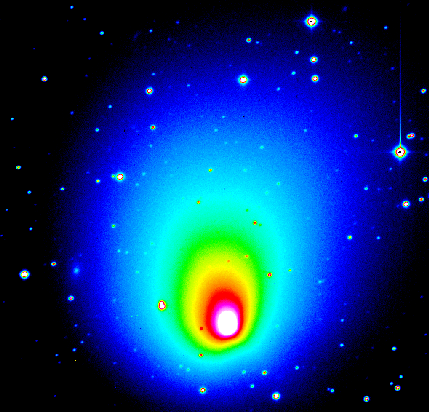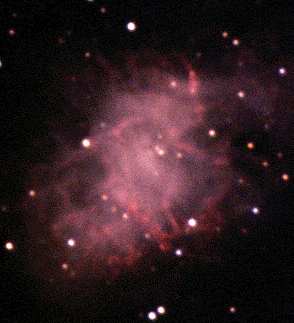| << Previous | Index | Next >> |
2015 The Trifid Nebula, also known as Messier 20, is easy to find with a small telescope, a well known stop in the nebula rich constellation Sagittarius. But where visible light pictures show the nebula divided into three parts by dark, obscuring dust lanes, this penetrating infrared image reveals filaments of glowing dust clouds and newborn stars. The spectacular false-color view is courtesy of the Spitzer Space Telescope. Astronomers have used the Spitzer infrared image data to count newborn and embryonic stars which otherwise can lie hidden in the natal dust and gas clouds of this intriguing stellar nursery. As seen here, the Trifid is about 30 light-years across and lies only 5,500 light-years away.
2014 The Crab Pulsar, a city-sized, magnetized neutron star spinning 30 times a second, lies at the center of this tantalizing wide-field image of the Crab Nebula. A spectacular picture of one of our Milky Way's supernova remnants, it combines optical survey data with X-ray data from the orbiting Chandra Observatory. The composite was created as part of a celebration of Chandra's 15 year long exploration of the high energy cosmos. Like a cosmic dynamo the pulsar powers the X-ray and optical emission from the nebula, accelerating charged particles to extreme energies to produce the jets and rings glowing in X-rays. The innermost ring structure is about a light-year across. With more mass than the Sun and the density of an atomic nucleus, the spinning pulsar is the collapsed core of the massive star that exploded, while the nebula is the expanding remnant of the star's outer layers. The supernova explosion was witnessed in the year 1054.
2013 The beautiful Trifid Nebula is a cosmic study in contrasts. Also known as M20, it lies about 5,000 light-years away toward the nebula rich constellation Sagittarius. A star forming region in the plane of our galaxy, the Trifid illustrates three different types of astronomical nebulae; red emission nebulae dominated by light emitted by hydrogen atoms, blue reflection nebulae produced by dust reflecting starlight, and dark nebulae where dense dust clouds appear in silhouette. The bright red emission region, roughly separated into three parts by obscuring dust lanes, lends the Trifid its popular name. But in this sharp, colorful scene, the red emission is also surrounded by the the telltale blue haze of reflection nebulae. Pillars and jets sculpted by newborn stars, below and left of the emission nebula's center, appear in Hubble Space Telescope close-up images of the region. The Trifid Nebula is about 40 light-years across.
2012
[imghover6=http://apod.nasa.gov/apod/image/1207/au ... nt_960.jpg]http://apod.nasa.gov/apod/image/1207/au ... ed_960.jpg[/imghover6]Image Credit & Copyright: Brad Goldpaint (Goldpaint Photography)
2011 What's that below the Milky Way? Historic kilns. Built in the 1870s in rural Nevada, USA to process local wood into charcoal, the kilns were soon abandoned due to a town fire and flooding, but remain in good condition even today. The above panorama is a digital conglomerate of five separate images taken in early June from the same location. Visible above the unusual kilns is a colorful star field, highlighted by the central band of our Milky Way Galaxy appearing along a diagonal toward the lower right. Many famous sites in our Galaxy are visible, including the Pipe Nebula and the Dark River to Antares, seen to the right of the Milky Way. The origin of the green mist on the lower left, however, is currently unexplained.
2010
Click to play embedded YouTube video.
Credit: Matt Harding & Melissa Nixon
2009 Get out your red/blue glasses and check out this remarkable stereo view from lunar orbit. Created from two photographs (AS11-44-6633, AS11-44-6634) taken by astronaut Michael Collins forty years ago during the 1969 Apollo 11 mission, the 3D anaglyph features the lunar module ascent stage, dubbed The Eagle, as it rises to meet the command module in lunar orbit. Aboard the ascent stage are Neil Armstrong and Buzz Aldrin, the first to walk on the Moon. The smooth, dark area on the lunar surface is Mare Smythii located just below the equator on the extreme eastern edge of the Moon's near side. Poised beyond the lunar horizon, is our fair planet Earth.
2008 Big, beautiful spiral galaxy M101 is one of the last entries in Charles Messier's famous catalog, but definitely not one of the least. About 170,000 light-years across, this galaxy is enormous, almost twice the size of our own Milky Way Galaxy. M101 was also one of the original spiral nebulae observed by Lord Rosse's large 19th century telescope, the Leviathan of Parsontown. Recorded at infrared wavelengths by the Spitzer Space telescope, this 21st century view shows starlight in blue hues while the galaxy's dust clouds are in red. Examining the dust features in the outer rim of the galaxy, astronomers have found that organic molecules present throughout the rest of M101 are lacking. The organic molecules tracked by Spitzer's instruments are called polycyclic aromatic hydrocarbons (PAHs). Of course, PAHs are common components of dust in the Milky Way and on planet Earth are found in soot. PAHs are likely destroyed near the outer edges of M101 by energetic radiation in intense star forming regions. Also known as the Pinwheel Galaxy, M101 lies within the boundaries of the northern constellation Ursa Major, about 25 million light-years away.
2007 Will global dust storms terminate the robotic Martian rovers? Over the past month, windy dust storms have blocked much needed sunlight from reaching the solar panels of both the Spirit and Opportunity rovers exploring Mars. At times, as much as 99 percent of direct sunlight has been obscured, causing worry that the batteries might run out of energy before the storms end -- which may be as long as weeks. In an effort to weather these storms, Earth controllers have programmed the rovers to restrict movements and to use as little power as possible. Although the rovers have been working for a remarkable three years past their planned three month lifetimes, their immediate future is now uncertain. Pictured above, the Opportunity rover perched on the edge of Victoria Crater peered for a month into the distance as dust made the Martian air increasingly opaque.
2006
2005 How were the unusual gas filaments surrounding galaxy NGC 1275 created? No one is sure. Galaxy NGC 1275 is the central dominant galaxy of the Perseus Cluster of Galaxies, a cluster with many member galaxies visible in the above image. In visible light, NGC 1275 appears to show a spectacular collision between two distinct galaxies. The galaxy and cluster are also bright emitters of X-rays. The unusual gas filaments are shown above in a very specific color of light emitted by hydrogen, here artificially colored pink. Possible origins for the filaments may involve details of the collision between the two galaxies, or alternatively, interactions between a galactic center black hole and the surrounding intracluster gas. NGC 1275, pictured above, spans about 100,000 light years and lies about 230 million light years distant toward the constellation of Perseus.
2004 Hot gas frequently erupts from the Sun. One such eruption produced the glowing filament pictured above, which was captured in 2000 July by the Earth-orbiting TRACE satellite. The filament, although small compared to the overall size of the Sun, measures over 100,000 kilometers in height, so that the entire Earth could easily fit into its outstretched arms. Gas in the filament is funneled by the complex and changing magnetic field of the Sun. After lifting off from the Sun's surface, most of the filamentary gas will eventually fall back. More powerful solar eruptions emit particles that reach the Earth and can disrupt manmade satellites. The cause and nature of solar eruptions are the topic of much research.
2003 In 1764, French astronomer Charles Messier sighted this gorgeous cosmic cloud which he described as an oval nebula without stars. Cataloged as M27, it is now popularly known as the Dumbbell Nebula, not for its substandard academic performance but for the elongated shape, like a bar with weights on each end, which first caught Messier's eye. This deep image of the bright planetary nebula does reveal the Dumbell's central star though, and an array of foreground and background stars toward the sly constellation Vulpecula. The picture is a composite that includes 8 hours of exposure through a filter designed to record only the light of hydrogen atoms, tracing the intricate details of the nebula's faint outer halo which spans light-years. Thought to be an example of the fate awaiting our own Sun 5 billion years hence, the Dumbbell Nebula is about 1,200 light-years away.
2002
2001 Is our Milky Way Galaxy surrounded by a halo of hot gas? A step toward solving this long-standing mystery was taken recently with Chandra X-ray observations of nearby galaxy NGC 4631. In the above composite picture, newly resolved diffuse X-ray emission is shown in blue, superposed on an HST image showing massive stars in red. Since NGC 4631 is similar to the Milky Way, this observation indicates that our own Galaxy is indeed surrounded by a halo of hot X-ray emitting gas, although we are too close to clearly differentiate it from more nearby extended X-ray sources. The clusters of massive stars probably heat the halo gas. Exactly how this gas gets ejected into a halo is a topic of continuing research.
2000 This is what a star really looks like from the surface of the Earth. To the best the human eye can see, stars are so far away they appear the same as would infinitesimal points of light. The Earth's atmosphere, however, is clumpy, so that different air pockets produce different images of a single point-like star. Because the atmosphere is always windy and changing, the number and position of images is always changing, with the result that stars appear to twinkle. In reality, the above time-lapse sequence occurs ten times faster. Close inspection will reveal a single small image of the star that is repeated over and over. This image is called a speckle and its size is again not really infinitesimal, but determined by strange quantum effects that involve the finite size of the telescope. Recent work in adaptive optics ("rubber mirrors") have made spectacular advances in reducing this atmospheric blurring. Betelgeuse is the star twinkling above, and in space, above the Earth's atmosphere, it really looks like this.
1999 The shockwave from a 20,000 year-old supernova in the constellation of Cygnus supernova explosion is still expanding into interstellar space. The collision of this fast moving wall of gas with a stationary cloud has heated it causing it to glow in visible as well as high energy radiation, producing the nebula known as the Cygnus Loop (NGC 6960/95). The nebula is located about 2500 light-years away. The colors used here indicate emission from different kinds of atoms excited by the shock: oxygen-blue, sulfur-red, and hydrogen-green. This picture was taken with the Wide Field and Planetary Camera 2 on board the Hubble Space Telescope.
1998 Aloha! With the graceful arc of the Earth's limb in the background, the Hawaiian Island archipelago is visible in this stunning photo taken by the astronauts onboard the shuttle Discovery in October of 1988. Along with popular beaches and tropical resorts, these volcanic islands offer extreme elevations with dark, dry, cloudless skies. Consequently they have also become popular sites for large and sophisticated ground based telescopes. The peak of Mauna Kea, on the Big Island (upper left), boasts an impressive array of astronomical instruments including the Keck, the Canada-France-Hawaii Telescope, the NASA IRTF, the JCMT and UKIRT, and the Gemini Telescope Project. The dormant volcanic cone of Haleakala on Maui (just below the Big Island) is home to the Air Force Maui Optical Station and the Mees Solar Observatory. Mahalo nui loa!
1997 Stars are evolving in the Large Magellanic Clouds (LMC). This is particularly evident in the above close-up of the LMC's edge, which appears about as large as the full moon. Visible only in the southern hemisphere, the LMC is one of the closest galaxies to our own Milky Way Galaxy at only 175,000 light years away. The LMC is one of only five galaxies visible to the unaided eye. The red bubbles are gas clouds dominated by dust and young stars which are continually forming. The green bubbles are clouds left over from relatively recent supernova explosions of massive stars. Astronomers are still unsure of many details in the tortured history of this irregular galaxy.
1996 Late March and early April of 1996 marked a banner season for viewing the spectacular naked-eye comet Hyakutake. The spring of 1997 could well offer a similar cometary wonder, Comet Hale-Bopp. Discovered last year while approaching the inner solar sytem Hale-Bopp has been eagerly watched for signs that it will indeed brighten spectacularly. So far, things look good! This recent image of the comet was made on May 14 at the European Southern Observatory when the comet about 340 million miles from Earth. It is shown here using false colors to indicate relative brightness. Stars are visible through the expanding coma. Recent reports are that its level of activity, the rate of dust and gas production from the solar heating of the icy nucleus is as expected. An analysis of its orbit indicates that this comet will approach to within nearly 120 million miles of Earth on March 22, 1997. The orbital calculations also reveal that Hale-Bopp has visited the inner solar system before ... about 4200 years ago.
1995 In the year 1054 a star in the constellation of Taurus exploded in a spectacular supernova so bright it appeared to dominate the sky except for the Sun and Moon for many days. It left behind one of the most brilliant nebulae, listed first in Charles Messier's list of nebulous sky objects. Today we know that the center of the nebula houses the remnant of the explosion: a spinning neutron star called a pulsar. The Crab pulsar is visible in almost every part of the electromagnetic spectrum, and has been a useful astronomical tool. It is still unclear how the the pulsar emits the light that we see.
| << Previous | Index | Next >> |
